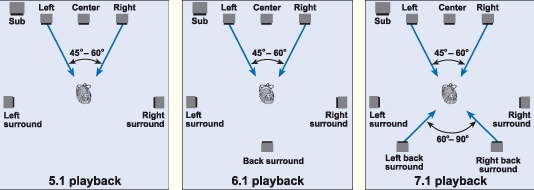A Prima Donna on PC: Creative Labs Audigy 2
5.1, 6.1 And 7.1: A Speaker Multiplication Table
In movie or DVD sound, 5.1 means the recording has been made on five main channels - right, left, center, right surround and left surround - plus one for LFE (Low Frequency Effects), represented by the .1 in "5.1." When it comes to speakers, the terms 5.1, 6.1 and 7.1 represent the number of elements in the sound system. The difference between them is simple: it just depends on the number of surrounds - two for 5.1, three for 6.1 and four for 7.1.
Some DVD sound tracks use a variation of Dolby Digital called Dolby Digital EX. This format uses a matrix system, which includes a third surround channel based on the left and right surround channels of the conventional 5.1. This matrix system means Dolby Digital EX is still considered a 5.1 system. Especially because Dolby Digital 5.1 decoders can read these sound tracks, the only difference being that sounds encoded for the third surround channel are re-transcribed on the surround channels of the conventional 5.1.
So a Dolby Digital EX sound track can be read in 5.1 by a Dolby Digital 5.1 decoder. But the reverse is also true. You can get a 6.1 or 7.1 from a 5.1 sound track. The signals on the two surround channels are mixed and redistributed through all three or four loudspeakers. This distribution can be done either with a Dolby Digital EX decoder or a THX Surround EX decoder.
So you can see that the figure describing the recording is not the same as the figure meaning the number of loudspeakers in a sound system. With Dolby Pro Logic II, you can even play a stereo sound track on a multi-channel system.
Get Tom's Hardware's best news and in-depth reviews, straight to your inbox.
Current page: 5.1, 6.1 And 7.1: A Speaker Multiplication Table
Prev Page So What Is 24/ 96 For? Next Page Dolby Digital
